November Walking Tour - Persistent Fruit
While many may prefer the bright and garish flowers found in the height of summer, November’s offerings come in a different form – persistent fruit. You might be familiar with orchards of apples, peaches or pears that were harvested in late summer and early fall. This month’s tour will look at fruit that lasts through the autumn months, often past the holidays, offering ornamentation that differs greatly from the strings of lights that one can now see around many of the trees at the Gardens in preparation for Blossoms of Light. This tour will take you through the Gardens to see some common and uncommon types of persistent fruit.
- First, upon entering through the Bonfils-Stanton Visitor Center, look to your left behind the lowest basin of the waterway in the Welcome Garden. Three mountain alders (Alnus incana ssp. tenuifolia) line the west side of the water. Their fruit is conelike and woody and forms from catkins that are eye-catching as the male flowers blow in the breeze in early spring. In nature, this native tree that is a member of the birch family is an indicator of riparian areas and is frequently found alongside cottonwoods.
- In the O’Fallon Perennial Walk there are several roses showing off their brightly colored hips. These shiny, fleshy, red or golden colored fruits are often found in clusters, like in the Rosa ‘Tuscany Superb’ that is about 1/3 of the way down the brick walk on the east side. Rose hips are often an ingredient in teas or vitamins as they are high in vitamin C, but these hips will likely be consumed by hungry birds in the coming months.
- Continue to the end of the Perennial Walk and then west through the Romantic Gardens to Woodland Mosaic. In the large garden bed north of the solarium you will see a tall tree with many bright red-orange clusters of small fruit so heavy that they are pulling the branches downward. This European mountain ash (Sorbus aucuparia ‘Fastigiata’) also has golden fall color in some years. While the common name is ash, this is not a relative of the ash trees (Fraxinus spp.) that are impacted by the emerald ash borer that has recently been in the news. These fruits are a food source for birds in winter.
- Proceed to Sacred Earth where there are two trees with persistent fruit. First, Douglas-fir (Pseudotsuga menziesii ‘Fastigiata’) has brown cones which contain small edible nuts like the ones found on closely related pine trees. The grove of Douglas-firs can be found on the north end near the waterway across from the Hive Garden Bistro. Follow the walkway around the horseshoe-shaped pool and you’ll come to a large upright evergreen tree, a Utah juniper (Juniperus osteosperma). Look closely and you’ll see many blue berry-like cones which are also forage for birds.
- Looping back to the main walkway between Sacred Earth and Dryland Mesa, follow the pathway south and take a right to walk towards the Laura Smith Porter Plains Garden. Before rounding the corner to head north, look to your right to see a small tree with numerous foot-long, thin capsules hanging and blowing in the breeze. The desert willow (Chilopsis linearis) is more charismatic in summer when it blooms with clusters of large pink flowers. It is a member of the family Bignoniaceae, which includes catalpa and trumpet vine, which also have similar long narrow fruit.
- Continue north along this path and turn east at Le Potager, past Monet Pool to the Darlene Radichel Plant Select® Garden. To your left you’ll see a narrow upright evergreen tree with many brown cones hanging downwards near the ends of the cascading branches. This weeping white spruce (Picea glauca ‘Pendula’) is part of the Plant Select® program and was only planted in this garden four years ago.
- Follow the path until it comes to the next major juncture. Turn right to walk down Shady Lane. While you walk down this long sidewalk, look closely at the trees that line both sides. Fifteen different types of crabapples (Malus spp. and cultivars) line this walkway and many of them are swathed with small fruit. You may notice the fruit vary in size and color. These are another fruit that are favored by birds that visit the Gardens in fall and winter. Unfortunately, many of these fruits also fall on the sidewalk, so they are considered one of the messier of our trees that have lasting fruit.
- Our final stop is right outside the main door of the Boettcher Memorial Center. Look to the left of the door that leads into Offshoots Café and you’ll see stems with large flattened pods on them. These pods, as you might suspect, are members of the pea family. The plant is called bird of paradise (Caesalpinia gilliesii) but it is quite different from the tropical plant that also goes by this moniker. This shrub is native to South America and produces a bright yellow flower with bright red stamens that extend well beyond the flowers.
Now that you’ve completed the tour, you are at a perfect spot to end your visit with a walk through the Boettcher Memorial Tropical Conservatory or to warm your hands with a hot drink at the café.
Persistent Fruit Gallery
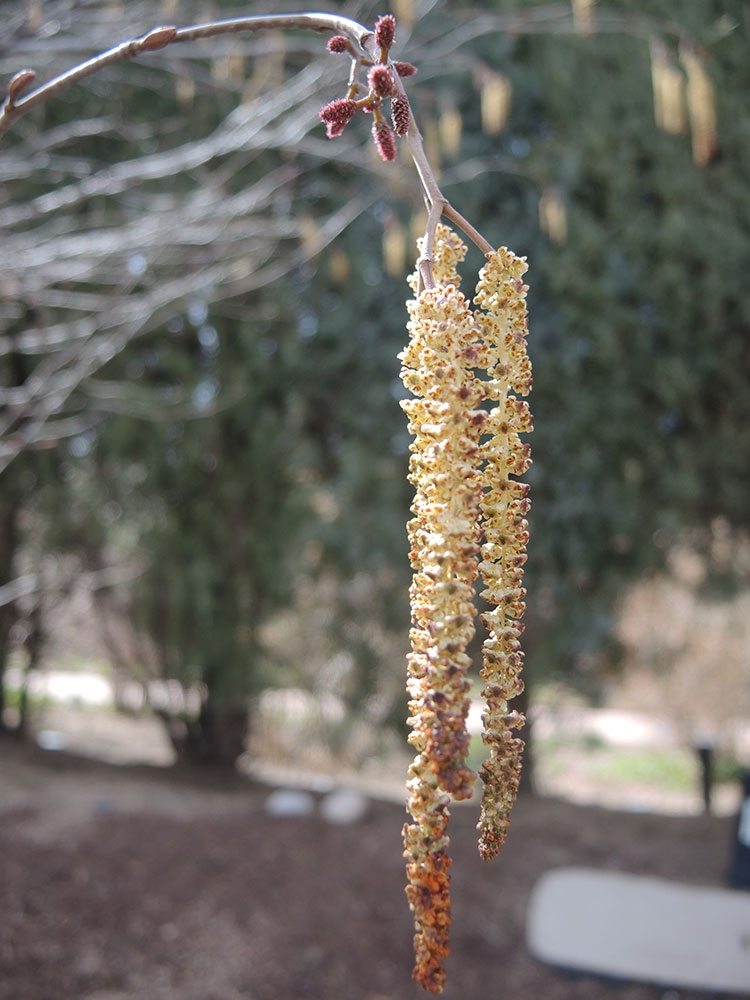
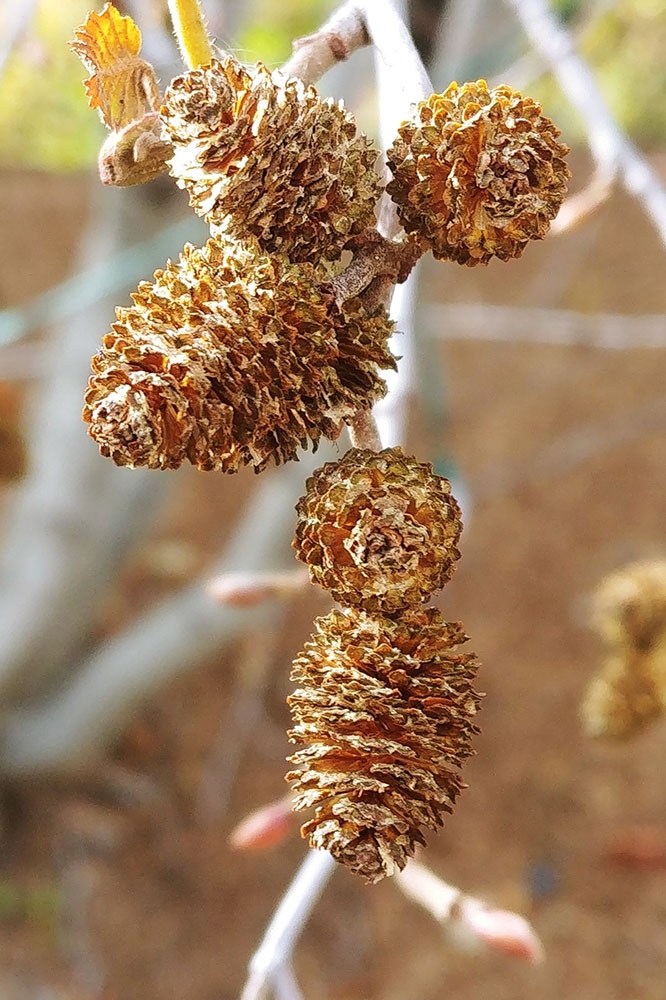
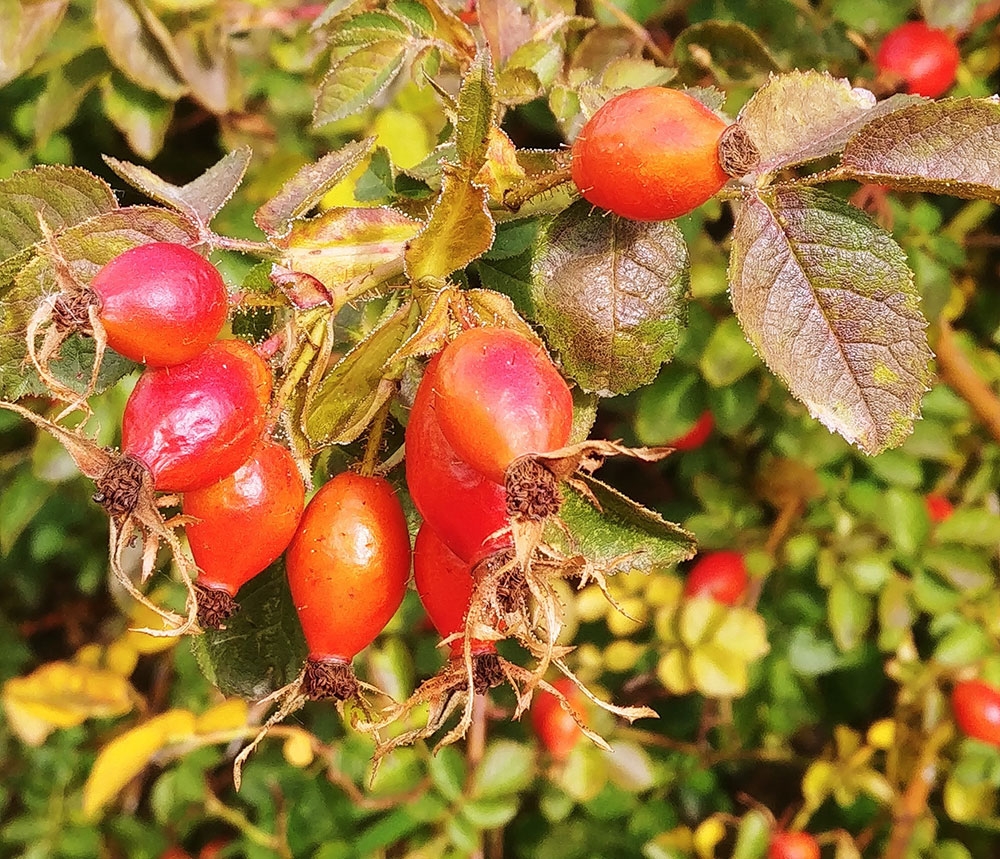
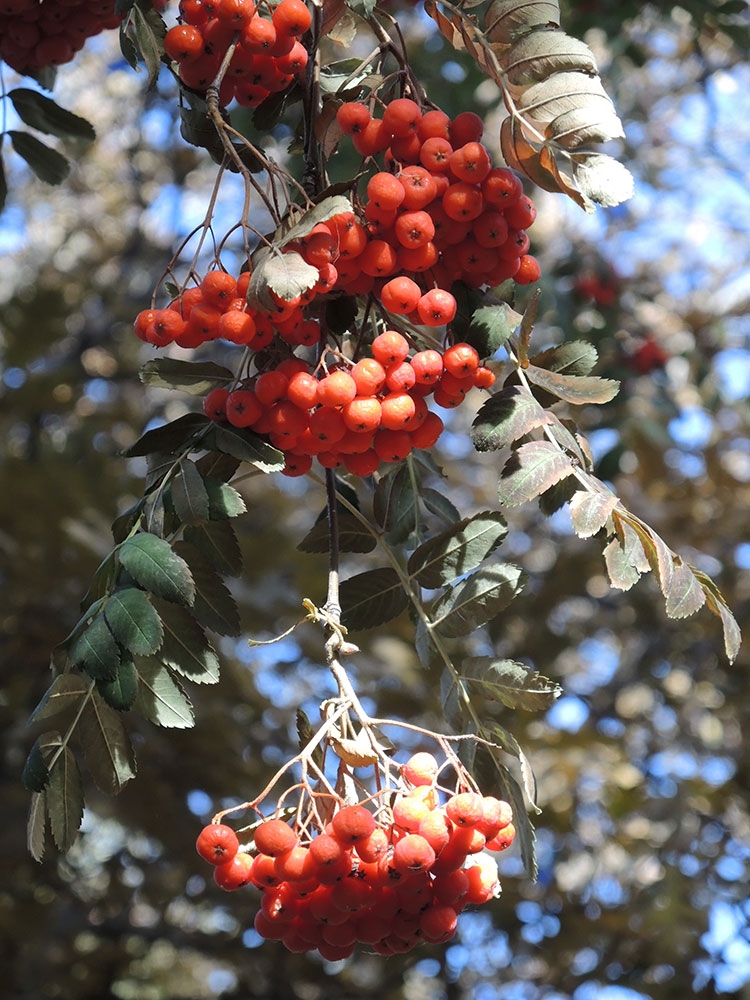
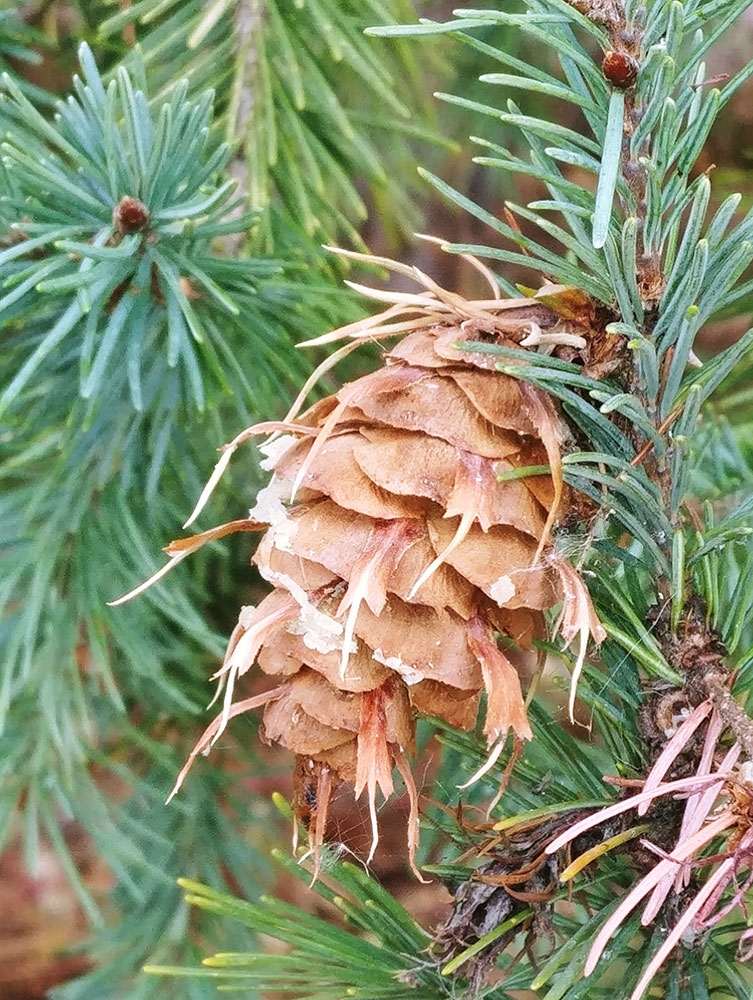
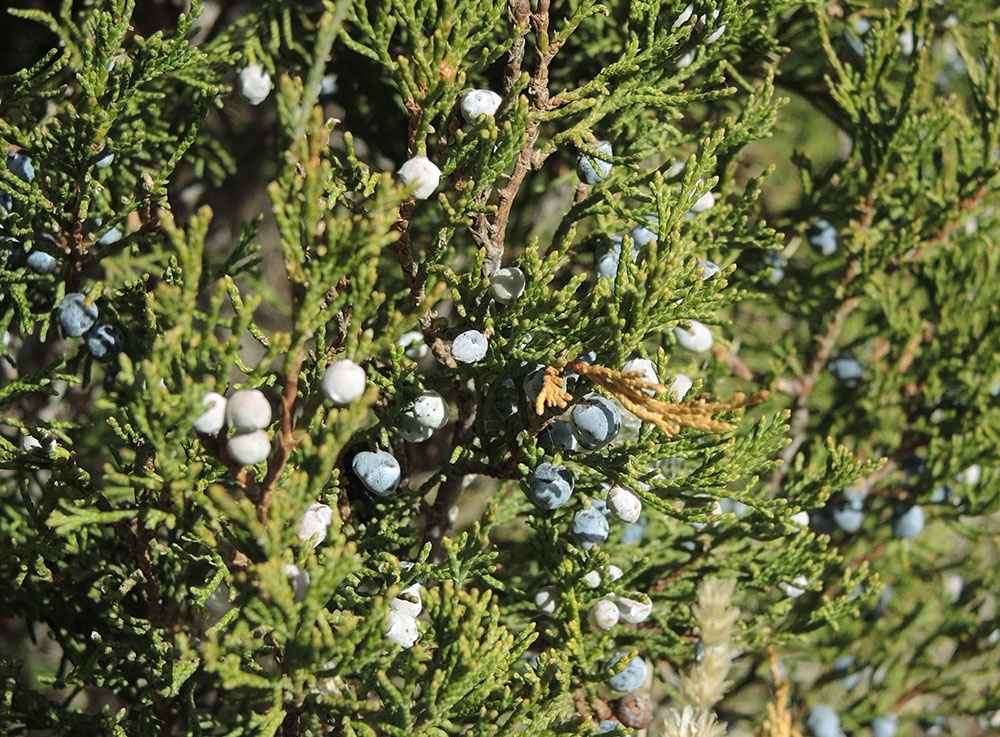
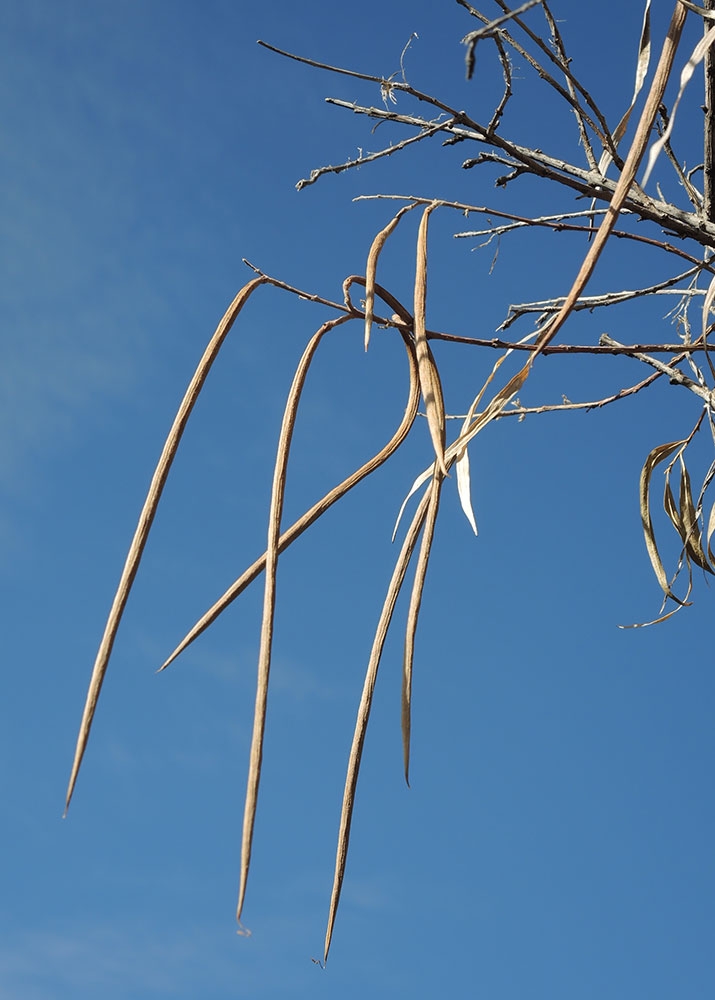
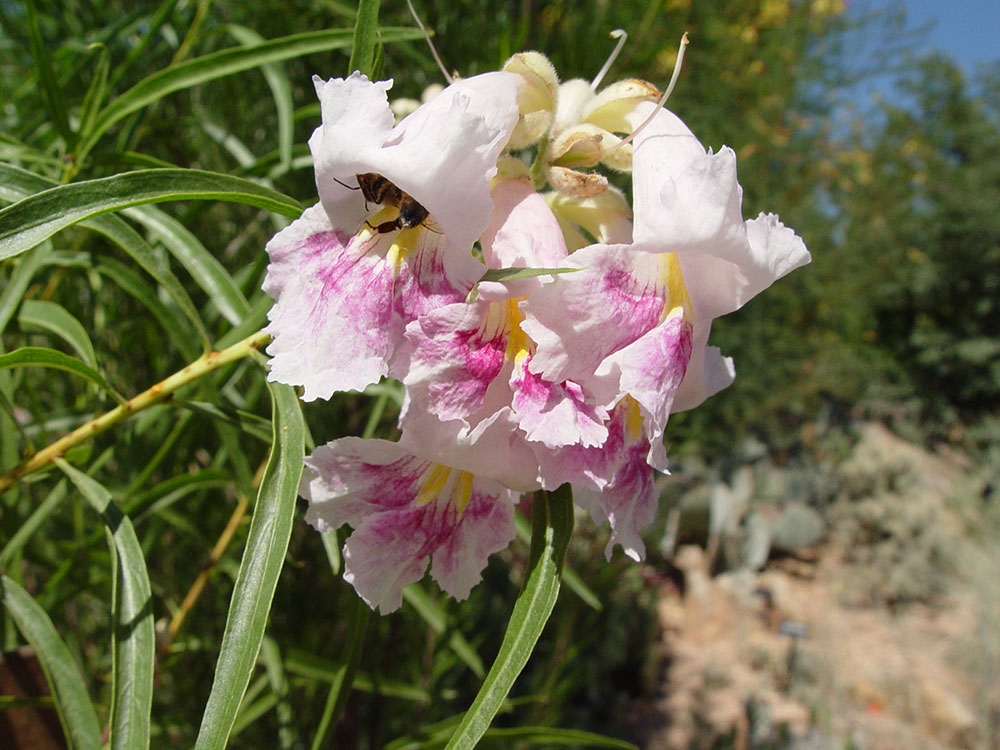
Add new comment